2019 Chemistry Capstone Symposium
PLU Chemistry Department 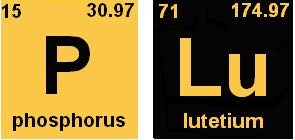
April 29th to May 3rd, 2019 Chemistry Department Senior Capstone
The schedule of talks and abstracts is given below.
[ Monday | Tuesday | Wednesday | Thursday | Friday ]
Keynote Speaker: Jessica Boze, Boeing
All talks will be held in Morken Center for Learning and Technology (MCLT), Room 103
Monday, April 29th , 2019 (Morken Center, Room 103)
1:00 pm - Welcome
1:10 pm - Survival of Varying Saccharomyces cerevisiae Cell Lines on Canavanine Media
Emily Bond, Senior Capstone Seminar
When facing a nonlethal selective pressure, cells are in a state of growth arrest, meaning that they are not able to divide. Many drugs work by arresting cell growth and preventing further division, but when cells are able to generate mutations granting them resistance, they may reenter the cell cycle. This allows the cells to pass on the mutation and make the drug-resistant phenotype permanent, a process called adaptive mutagenesis (AM). Previous studies in our lab have demonstrated that in response to a drug-induced growth arrest, frequencies of AM differ between Saccharomyces cerevisiae with distinct genetic backgrounds. In addition to arresting growth, the drug we used eventually kills the cells. This study investigates the survival of non-resistant yeast cells with varying genetic backgrounds when exposed to drug-containing media, thus ensuring that the varying lines of yeast cells have the same window of opportunity to generate an AM granting them resistance. The lack of robust trends in survival indicate that the varying lines of yeast cells may have similar windows of opportunity to generate AM that grants them resistance to the drug-induced pressure.

1:45 pm - A Study of the Phytochemical Constituents of Diospyros lycioides
Shelby Coates, Senior Capstone Seminar
A screening for different phytochemical classes was performed on a well-known medicinal plant in Namibia, Diospyros lycioides. D. lycioides is known locally to treat numerous ailments from dysentery to sexually transmitted diseases. Phytochemical screening was performed on eight crude extracts; four extracts with varying polarity of solvents on root samples and four extracts with varying polarity on stem samples. The crude extracts were then tested for various phytochemical classes and antioxidant activity via a radical scavenging assay using DPPH to determine the IC50 value. We have found the presence of the following phytochemical classes within the extracts: alkaloids, anthraquinones, diterpenes, glycosides, phenols/tannins, phytosterols/steroids, and terpenes. Three of the stem crude extracts had very low IC50 values, indicating the stems have a high antioxidant capacity. Further studies are needed to isolate and purify specific phytochemical compounds from the crude extracts.
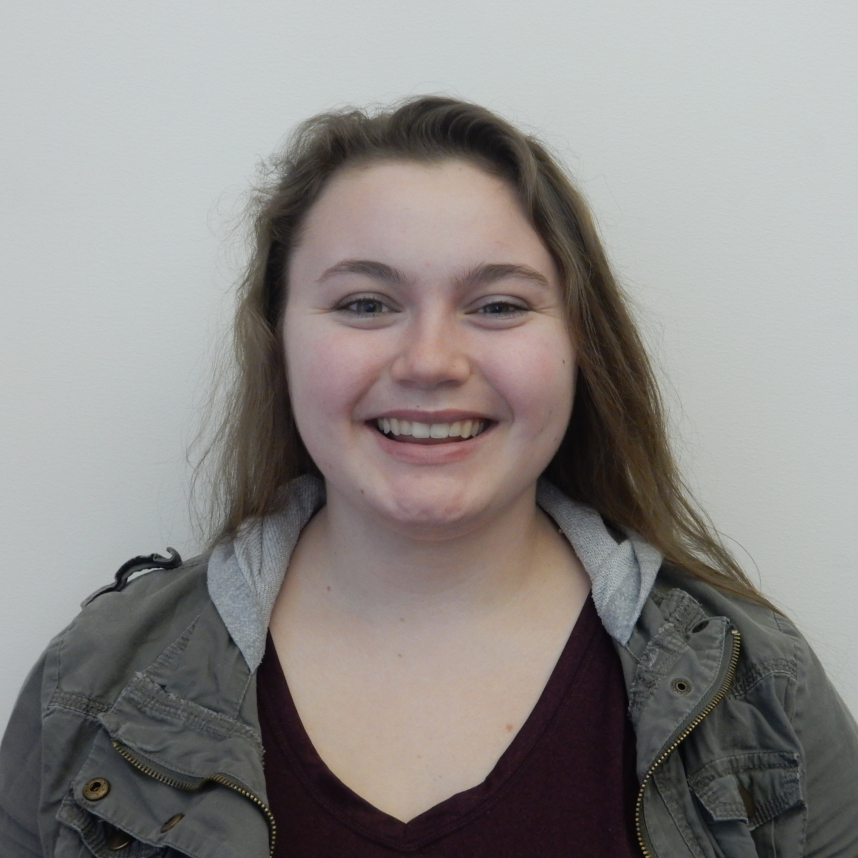
2:20 pm - Attempts to create an educational and safe procedure centered around the Tsuji-Wacker oxidation catalyzed by Fe (II) Chloride
Ben Martin, Senior Capstone Seminar
This study focuses on the adaptation of the Tsuji-Wacker oxidation to be used in an undergraduate lab. The main purpose for adapting this reaction is to find an environmentally-friendly hydration method that can be used to selectively synthesize the Markovnikov and anti-Markovnikov forms. Using a literature reference, it was discovered that replacing the typical pd (II) catalyst with an iron catalyst yielded a similar result. Using an iron catalyst as opposed to a palladium catalyst would be very beneficial as it is much cheaper to buy making it perfect for an educational lab. Through attempts to reproduce these literature results proved to be challenging as the procedure was not clear as to the specifics of the reaction; this led to alterations being attempted. Some alterations include the use of solvent-less trials, altering the solvent that is used, as well as running the reaction through means of sonication and increased temperature. These reactions did not create our intended product but did show different fragmentation patterns and possible limitations for the proposed reaction, suggesting a key piece of the procedure is missing. It was also discovered that olefins containing multiple ring structures pose a unique challenge as side products readily form.

2:55 pm - Flow Cytometry-Based High-Throughput Screen to Sort Cells Producing the Biofuel Precursor Botryococcene
Christine Sohn, Senior Capstone Seminar
Botryococcene is a biofuel precursor produced by the algae Botryococcus braunii. Through the process of hydrocracking, this branched triterpene yields various combustible fuels of industrial interest such as gasoline and kerosene. Therefore, it is of much interest to explore the biochemical pathways of botryococcene in order to engineer the specific proteins involved to optimize its production. This study investigates the use of a diaryltetrazole based screen that reacts with the branched terminal alkene of botryococcene to yield fluorescent cells which can then be sorted via flow cytometry. Host E. coli systems were used to produce the biofuel precursor of interest. Cells producing squalene and no triterpenes served as a measure against false-positives and as a control. It was found that there was an observable difference in fluorescent intensity for botryococcene producing cells as compared to the squalene and control cells which allowed for fluorescence-activated cell sorting (FACS) to sort botryococcene producing cells from control and squalene producing cells.

3:25 – 3:40 - Senior Class and Faculty Photo
3:40 pm - Verifying Transcriptional Mutagenesis in Saccharomyces cerevisiae via Reconstruction Techniques
Kinsey Reed, Senior Capstone Seminar
Retromutagenesis occurs when a DNA lesion causes a transcriptional mutation that yields a mutant protein and allows for the escape from a repressive stimulus. Mutant Saccharomyces cerevisiae, thought to have gained mutation through tran-scriptional mutagenesis, was grown and counted on nutrient-rich (YPD) and selective (CAN) medias. Mutations in clones that grew by the third day could be attributed to retromutagenesis while those that didn’t grow until later could possibly be classified as strains that grow more slowly. The amount of colonies counted on the CAN media by day 3 to the amount counted on day 10 was 0.91. The total amount of colonies counted on the CAN media to total YPD colonies, as well as the amount of colonies counted on CAN by day 3 to those counted on YPD were found to be 0.56 and 0.64, respectively.

4:15 pm - Engineering Biofuel Producing Proteins to Increase Efficiency in Biofuel Production
Luna Kim, Senior Capstone Seminar
Boytrococcene is a hydrocarbon produced by a species of algae known as Botryococcus braunii. Botryococcene can be hydrocracked and distilled to produce a variety of biofuels such as gasoline, diesel, and kerosene. This project primarily focuses on improving the efficiency of biofuel production by engineering SSL-1, a biofuel producing protein, to accommodate for shorter substrates resulting in a shorter botryococcene chain and ultimately, a higher percent yield of fuel. Homology models and ligand docking results were used to study the active site of the enzyme to determine the amino acid residues that would be mutated. Four residues were selected for mutation: Val187Phe (V187F), Leu210Phe (L210F), Gly211Leu (G211L), and Gly211Phe (G211F) based on their location with respect to the substrate. These residues lie near the base of the cavity where the substrate chains end. In theory, mutating these small amino acids with larger and more bulky residues should introduce more electron density and therefore close up the cavity making them shorter. Upon successful mutation of SSL-1, enzyme activity will be observed by performing in vitro studies. Ideally, these shorter cavities should better accommodate for shorter botryococcene substrates and ultimately improve the efficiency of biofuel production.

1:10 pm - Investigating the effects of oxidative DNA damage in Saccharomyces cerevisiae on survivability and mutagenesis
Olivia Egejuru, Senior Capstone Seminar
Reactive oxygen species (ROS) are byproducts of normal cellular metabolism. However, their levels can be increased by external factors such as UV-A light or hydrogen peroxide, causing oxidative stress. These ROS can damage the DNA, and if the damage is left unrepaired, it can lead to permanent mutations that may affect the characteristics of the cell. Our laboratory is interested in the mechanism by which non-dividing cells acquire mutations in response to selective pressure that inhibits their growth, a process known as adaptive mutagenesis. Previous work has shown that compromising the repair of oxidative DNA damage (ogg1Δ cells) or the proofreading capacity of the RNA polymerase during transcription (dst1Δ cells) increases the frequency of adaptive mutagenesis. Work by Kuraoka et al (Kuraoka, I.; Suzuki, K.; Ito, S.; Hayashida, M.; Kwei, J. S. M.; Ikegami, T.; Handa, H.; Nakabeppu, Y.; Tanaka, K. DNA Repair 2007, 6(6), 841–851.) indicates that dst1Δ cells are more sensitive to oxidative stress than their WT counterparts. In this study, we assessed the effects of oxidative stress on cells lacking dst1, both alone and in conjunction with ogg1Δ, with respect to cell survival and mutagenesis. While data collection is ongoing, preliminary results will be presented.

1:45 pm - Retro-Diels-Alder reactions of nitrosocarbamimides as potential urea prodrugs
Anna Tran, Senior Capstone Seminar
The use of long-acting injectable medications is an established strategy for sustained drug delivery. A drug-polymer conjugate involving drug release controlled by the rate of retro-Diels-Alder reactions of dienophile-containing prodrugs attached to a polymer-bound diene is a potential new strategy. Nitrosocarbamimides, formed by the oxidation of hydroxyguanidines, are a promising dienophile class that could undergo retro-Diels-Alder reactions at mild temperatures and then hydrolyze to biologically-active ureas and nitroxyl. N”-hydroxy-N,N’-diisopropylguanidine was successfully synthesized by the condensation of N,N’-diisopropylcarbodiimide and hydroxylammonium chloride, and then was oxidized by iodobenzene diacetate into N,N’-diisopropylnitrosocarbamide. In situ Diels-Alder reactions were then performed to conjugate the dienophile nitrosocarbamimide to the model dienes 1,3-cyclopentadiene, 1,3-cyclohexadiene, and 9,10-dimethylanthracene, and a-terpinene. In the kinetics study for the drug release through retro-Diels-Alder reactions, the decomposition reactions were conducted at temperatures ranging from 37 °C to 65 °C and monitored by proton NMR spectroscopy vs. an internal standard. Slow, controlled decomposition was observed for the diisopropylnitrosoguanidine cyclopentadiene Diels-Alder adduct, and the first-order rate constants as well as half-lives will be determined. However, the diisopropylnitrosoguanidine cyclohexadiene cycloadduct proved too stable, not showing any decomposition even at higher temperatures (85 °C), while the adduct with dimethylanthracene happened to decompose at room temperature. The study is being continued with 1,3,5,5-tetramethyl-1,3-cyclohexadiene as a diene model known to be active in retro-Diels-Alder reactions.

2:20 pm - Determining Retinoid Derivatives in Cosmetic Products By High-Performance Liquid Chromatography Analysis
Alexia Ngin, Senior Capstone Seminar
Photoaging is premature aging of the skin caused by constant exposure to UV radiation. Vitamin A (also known as retinoid) is the solution to this issue, because it improves the skin by assisting the skin’s cell reproduction and growth. An exploration of synthetic and natural vitamin A derivatives are analyzed in skincare products. High-Performance Liquid Chromatography (HPLC) provided the retention times and peak areas of the standards and samples to identify the derivatives present as well as quantify the chemical composition. The results reveal that The Ordinary (0.2% retinol) has retinoic acid and retinol, The Ordinary (5% retinoid) is composed of retinaldehyde and retinyl acetate, and Neutrogena possess retinoic acid and retinol. Amarte has retinoic acid and L’Oreal has retinyl palmitate, but both samples actually contain nano-encapsulated derivatives. This is exhibited in a low extraction percentage from difficulty in breaking through the shell. Further investigation would need another method of extraction in order to break through the nano-encapsulation.

2:55 pm - Anodic Stripping Voltammetry at a Gold Disk Electrode to Detect Lead Contaminants in Local Water Samples
Dru Wickenkamp, Senior Capstone Seminar
Square-wave anodic stripping voltammetry has been studied at a 3 mm gold disk electrode following the accumulation of lead ions on the surface of the electrode using a -1.0 V current for 120 seconds with a step size of 2 mV, pulse size of 25 mV, and a frequency of 25 mV. ICP analysis of lead was also studied during this experiment. The stripping of lead was studied to determine the peak current and relative concentration of lead in collected water samples from the Green River near Black Diamond, WA due to this location’s large agricultural community. Both the voltammetry and ICP solutions were made in trace metal grade HNO3 ([Pb2+] ≥0.1 ppb). A calibration curve was created for both voltammetry and ICP analysis at concentrations of 1-100 ppm for voltammetry and 1-50 ppb for ICP. The calibration for this data via ICP provided a strong R2 of 0.971. The collected environmental samples were measured using ICP and showed a concentration of below 1 ppb. This showed that all water samples contained [Pb2+] that are well below the EPA’s limit of 15 ppb, which is a positive indication of the region’s water quality.
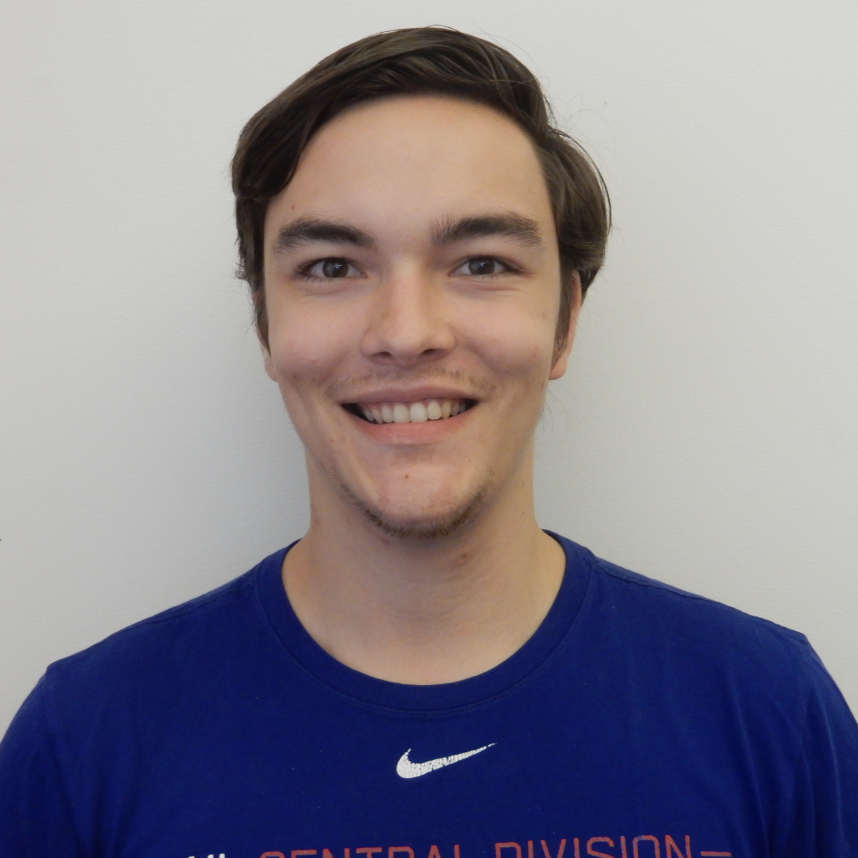
3:25-3:40 pm - Break
3:40 pm - ASARCO’s Legacy: Bioaccumulation of As, Cd, and Pb in Mytilus trossulus and Mytilus californianus of Puget Sound
Laura Glastra, Senior Capstone Seminar
Mussels are a valuable sentinel species used to assess hazards of pollutants in ecosystems. Here, the concentrations of As, Cd, and Pb were measured in eight composite samples of mussel (Mytilus trossulus and Mytilus californianus) collected in July 2018 and April 2018. Samples were collected from four locations within five miles of the previous American Smelting and Refining Company (ASARCO) smelter in Tacoma, Washington. Concentrations of metals in individual specimens from Totten Inlet in July 2018 were also determined. The results were used to assess the lasting anthropogenic impacts of legacy metals from ASARCO.

4:15 pm - None Scheduled
Senior Capstone Seminar
None scheduled.

1:10 pm - Activated Carbon Nanostructures
Lindsey Stakset, Senior Capstone Seminar
The synthesis of activated carbon nanofoams has been a topic studied by many researchers for the possibility to create a capacitor with a large amount of capacitance and surface area, while being light in weight and relatively inexpensive to produce. This research focused on reproducing the claims from other literature to produce carbon nanofoams with high capacitance through a base catalyzed reaction of resorcinol and formaldehyde to polymerize around Lydall carbon paper. If we can synthesis carbon nanofoams with high amounts of surface area, then we can use electrochemistry to verify the large amounts of surface area and attempt to enhance the carbon nanofoams by using a transition metal oxide to coat the surface because transition metal oxides are light weight, have high electron conductivity and can increase the surface area. The carbon nanofoams were electrochemically tested with cyclic voltammetry and electrical impedance spectroscopy; the measurements of five carbon nanofoams had a surface area of 440 ± 6 m2/g and capacitance of 44 ± 6 F/g in a nonaqueous solution of 0.1 M TBAP in CH3CN. The carbon nanofoams were also tested in aqueous condition of 2.5 M Li2SO4 which gave a wide array of capacitance values of 5.9 – 33 F/g. The variation in the capacitance values was partially due to the difficulty to fully fill in the pores of the carbon nanofoams with Li2SO4, due to the surface tension of the electrolyte. The samples ran in aqueous conditions were coated with MnOx to attempt to increase the capacitance, there was an increase in the capacitance of the carbon nanofoams coated in MnOx however further research will be needed to better evaluate the extent that the capacitance increased. Overall, carbon nanofoams do have a large amount of surface area and capacitance, as well as options to enhance the capacitance. These results along with any other future research will help start a driving force towards moving to producing capacitive materials that have a greater capacitance per weight for everyday use.

1:45 pm - Iron-Catalyzed Wacker-Type Oxidation of Natural Substituted Al-lylbenzenes
Jordan Landes, Capstone Senior Seminar
In this experiment, we attempted to adapt a method described in the literature for a Wacker-type oxidation of olefins using an iron catalyst to the natural allylbenzene eugenol in order to oxidize eugenol’s terminal alkene to a ketone. This oxidation was attempted under three reaction conditions: a reaction of eugenol, PMHS, and FeCl2 in ethanol under reflux, under heated sonication, and in a microwave synthesis. Analysis of these reaction products by FTIR, 13C, and 1H NMR determined that the desired ketone oxidation product was not produced through any of the three methods. However, NMR spectra of the reaction carried out under sonication suggests that potentially some that some of the aldehyde oxidized product of eugenol may have been formed.

2:20 pm - Studying the Electronic Effects of Varying Substituents on the Aromaticity of Benzofulvenes
Cole Fisher, Capstone Senior Seminar
Benzofulvenes are molecules that are becoming increasingly more popular in research due to their ability to act as models for graphene and their high conjugation. Benzofulvenes contain a fulvene moiety within this conjugated system and are able to model how substituents affect aromaticity in this region. By changing the substituents on the exocyclic benzene ring to electron donating groups, the fulvene moiety can have more aromatic characteristics such as a low bond length alterna-tion (BLA). In this paper a procedure to synthesize benzofulvenes with varying exocyclic substituents will be outlined and six novel benzofulvenes will be studied to determine how the different electronic substituents affect aromaticity in the ful-vene moiety. The six benzofulvenes synthesized are an o-chloro, p-chloro, o-trifluoromethyl, m-trifluoromethyl, p-trifluoromethyl and a 2-chloro-4-methoxy derivative. Using these derivatives of benzofulvenes as well as other derivative previously synthesized by this lab a trend can be seen that the more strongly electron withdrawing groups have a higher BLA meaning that there is less aromatic characteristics, while the weaker electron withdrawing groups have a lower BLA and high aromatic characteristics. This data is also supported by the UV-Vis data taken of the six molecules as the lower electron withdrawing groups showed a bathochromic shift as to be expected with an increase in aromaticity of the compound.

2:55 pm - Quantitative Analysis of Lead (Pb), Arsenic (As), and Antimony (Sb) in Metallic Coatings of Children’s Toys
Brandon Blanchet, Capstone Senior Seminar
Consumer product toxicology is a relatively new and developing field of chemical research. These analyses are typically focused on a total composition approach when determining levels of known toxicants. This study instead focused on the metallic paints and coatings applied to children’s toys specifically; an approach yet to be performed according to available literature at the time of publication. This study first examined the overall composition of all samples (n=49) to qualitatively identify suspect samples. Suspect samples (n=9) were then re-examined where levels of Pb, As, and Sb were quantified using Induction Coupled Plasma Mass Spectroscopy (ICP-MS). Limits of Detection (LOD) for Pb, As, and Sb were found to be 0.232 ppb, 0.339 ppb, and 0.206 ppb respectively. Levels of As were below the LOD in all suspect samples. Levels of Sb were above the LOD for all suspect samples and ranged from 4.8 to 35.4 ± 0.9 ppb. Levels of Pb were below the LOD for all samples, less BB35 and BB49, and were 9 ± 1 and 32 ± 1 ppb respectively. No samples were found to violate the Environ-mental Protection Agency (EPA) total composition allowable limits (ref. value) for this category of consumer good.

3:25-3:40 pm - Break
3:40 pm - Pharmacokinetics of Waixenicin A: An Ischemic Stroke Drug Lead from the Hawaiian Soft Coral Sarcothelia edmondsoni
Ellis Akana, Capstone Senior Seminar
The main pathways involved in inducing a stroke are well known but there are very few methods of prevention or treatment. Among these pathways is the ischemic stroke cascade that involves the unregulated influx of calcium. The transient receptor potential melastatin 7 (TRPM7) channels play a major role in a variety of physiological and pharmacological functions within your body. This channel has been studied to be overactive after hypoxic ischemic injury. A fairly new compound, Waixenicin A has been identified as the most selective and potent inhibitor of the TRPM7 channel as of 2015, thus blocking Ca2+, Mg2+, and other divalent cations from entering cells. Waixenicin A is characterized as a diterpene isolated from the soft coral Sarcothelia edmonsoni, which is endemic to Hawaii. Sarcothelia edmonsoni has been found to grow in the waters off of east O’ahu, Hawai’i. When isolated, Waixenicin A has been seen to have very low IC50 values as well as a fairly high yield. Waixenicin A has been identified as a promising drug lead for stroke therapy. A compound’s pharmacokinetic characteristics relating to administration, distribution, metabolism, and excretion (ADME) are critical to its potential as a drug lead. We developed an LC-MS analytical method to detect and quantitate waixenicin A in order to measure its aqueous and plasma stability, solubility, and logP as well as a method for analysis of waixenicin A metabolites and degradation products. The aqueous stability of waixenicin A has led to the conclusion that our compound will most likely be stored in fat tissues and less likely to be stored in one’s blood. The preliminary plasma and aqueous stability results supported the short half-life of waixenicin A. Our results also showed that the partitioning coefficient (logP) of waixenicin A is 3.81, which is lower than the theoretically calculated logP value of 4.7. Future studies will be required to determine the presence and efficacy of waixenicin A’s metabolites using mouse hepatic microsomes, which contain P450 enzymes.

4:15 pm - Improving the Mechanical Properties of Additively Manufactured Continuous Carbon Fiber Reinforced Polymers Through Annealing
Matthew Abel, Capstone Senior Seminar

1:10 pm - Forthcoming
Adam Jones, Capstone Senior Seminar (Presented May 24, 11:30 a.m., MCLT 132)

1:45 pm - The Effect of Hydrogenation on Conductivity and Glass Transition Temperature in Oxanorbornene Dicarboximide Based Polymers
Andrew Riedl, Capstone Senior Seminar
Solid polymer electrolytes are a promising alternative to small molecule organic electrolytes to increase safety in lithium ion batteries. Two polymers have been synthesized by ring opening metathesis polymerization (ROMP) to study the decoupling of segmental motion and ion conductivity with an increase in backbone rigidity due to pi stacking. These polymers have an oxanorbornene dicarboximide backbone where one polymer has a side chain with three units of ethylene oxide and the other polymer has a xylene group between the backbone and the same ethylene oxide side chain. Additionally, these polymers have been hydrogenated using Wilkinson’s catalyst to produce potentially more stable electrolytes. Conductivity measurements using dielectric spectroscopy of these polymers will be presented. The influence of pi stacking on segmental motion and changes to the glass transition temperatures will be used to interpret the conductivity results.
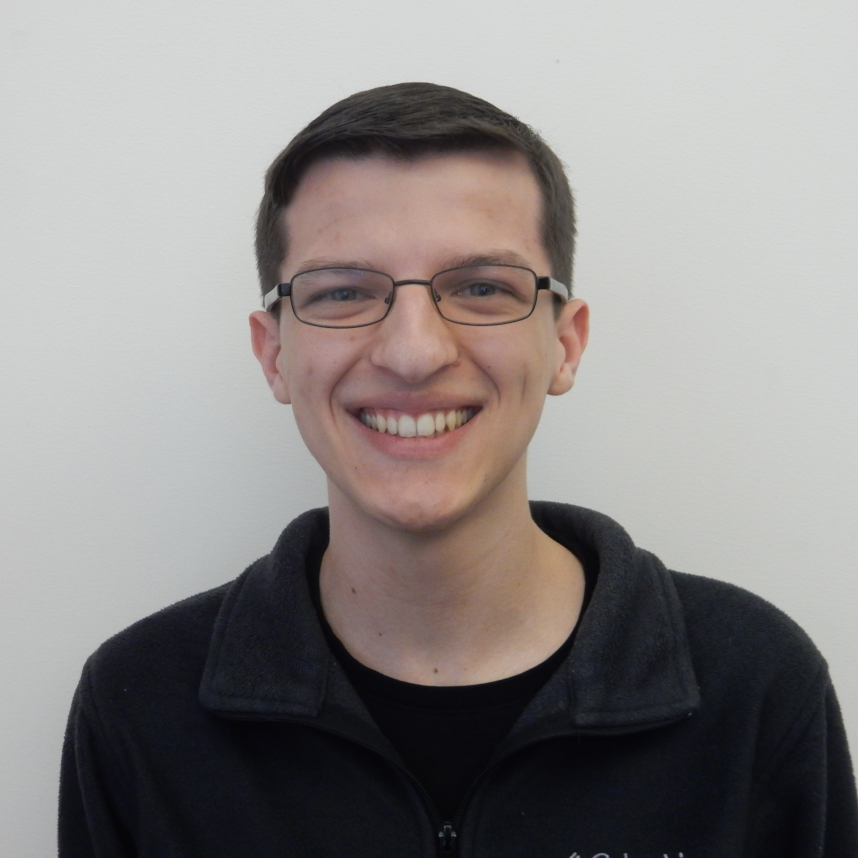
2:20 pm - Improving Luminescent Solar Concentrator Efficiency Using Doped Elongated Nanocrystals
Jenise Cavness, Capstone Senior Seminar
Luminescent Solar Concentrators (LSCs) are a promising technology for collecting concentrated light for photovoltaic cells or photocatalysis. An LSC is a transparent waveguide with embedded dyes. The dyes absorb sunlight and then luminesce, the emitted light propagates by waveguiding in the LSC and can be collected at the edges. The most efficient LSCs often use nanocrystal quantum dots as the dye.
We are examining the improvements in LSC efficiency by using elongated Mn-doped ZnSe/ZnS nanocrystals as the LSC dye. Doped nanocrystals have a large effective Stokes shift which has been shown to increase LSC performance. Elongated nanocrystal shells have the potential to be aligned within the LSC to minimize photon loss.

2:55 pm - Quantitative Analysis & Remediation of Halogenated Aromatic Compounds in the Sediment of the Duwamish River
Sammy Weber, Capstone Senior Seminar
Determining appropriate remedial methods for river sediments contaminated with halogenated aromatic compounds has been a frequent issue in the field of environmental chemistry. When halogenated aromatic compounds such as polychlorinated biphenyls, polychlorinated dibenzodioxins and polychlorinated dibenzofurans are present in these aquatic environments, they can pose serious risks to the health of the ecosystem. The Duwamish River is an example where these compounds have been found in high concentrations. This review discusses how analytical and instrumental methods are applied to cases like the Duwamish in order to develop an appropriate remedial method. Specifically, quantitative analysis of compounds such as these can be accomplished through the use of gas chromatography equipped with electron capture detector. Quantitative analysis is a crucial step in the remedial process because it allows the severity of sediment contamination to be accurately determined. After applying instrumental and analytical methods, an appropriate remedial method such as capping or dredging can be chosen to restore the sediment. Using concepts from analytical and instrumental chemistry allows for a suitable remedial method to be picked, creating a hopeful future for the restoration of the sediment.
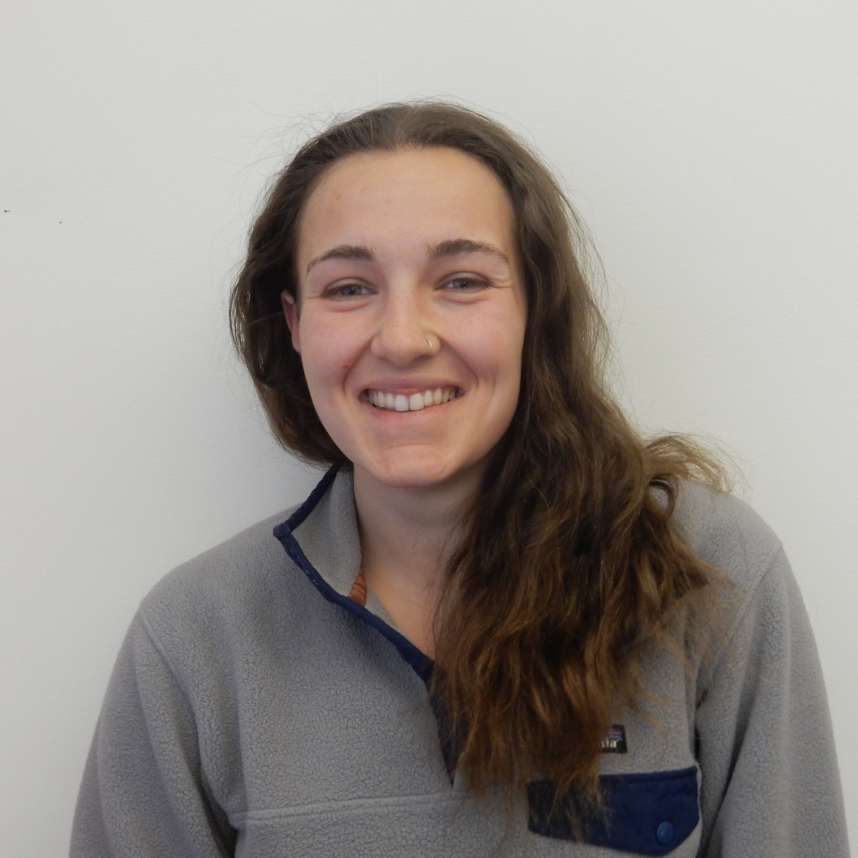
3:25-3:40 - Break
3:40 pm - Synthesis of hydroxyguanidine models for conjugation to a drug-releasing polymer by a nitroso-Diels-Alder reaction
Qiqige Qiqige, Capstone Senior Seminar
Hydroxyguanidines are a group of guanidine derivatives which are structurally related to the anticancer agent hydroxyurea. Hydroxyureas have received extensive attention in the field of biochemistry and pharmacy due to their ability to produce bioactive nitrogen oxide species by oxidation and hydrolysis. Hydroxyarginine, a hydroxyguanidine species, is the native source of nitric oxide (NO) and nitroxyl (HNO). Hydroxyguanidines can act as nitroxyl (HNO) donor by first being oxidized to a reactive carbamimidoyl nitroso species. This intermediate has the potential to attach to a drug-polymer conjugate systems as reversibly-bound Diels-Alder dienophiles. In this study, a strategy to synthesize hydroxyguanidines involving substitution reactions of hydroxylamines with thiourea derivatives were investigated. The synthesis of the target hydroxyguanidine included generating thiourea using a substituted diamine as the building block of the thiourea and methylation of the thiocarbonyl to form the methanethiol leaving group. All products were identified using NMR and IR spectroscopies.

4:15 pm - None Scheduled
Senior Capstone Seminar
None scheduled.

1:10 pm - Analysis of Heavy Metal Contamination in Soil at the Point Defiance Park using Laser-Induced Breakdown Spectroscopy (LIBS)
Alex Klussmann, Senior Capstone Seminar
This article concerns the concentration of various heavy metals such as arsenic (As), cadmium (Cd), and lead (Pb) as well as many other elements in soil at the Point Defiance Park in Tacoma, Washington, due to the ASARCO Smelting Plant. This study was performed in an effort to confirm that adequate soil remediation techniques were employed when cleaning up the area. In this study, soil samples were taken from 35 different sites randomly distributed around the park region along the 5 Mile Loop Trail, at surface levels and at levels approximately three inches deep for each site. The concentration of heavy metals within the samples was determined using Laser-induced breakdown spectroscopy (LIBS) to a millionth degree of uncertainty. The concentration of the metals within the soil confirm that the soil was effectively remediated in certain parts of the park, but not effectively remediated in other parts. This study shows that more work needs to be done in order to keep the park safe.

1:45 pm - Machine Learning Applications in Protein Folding Prediction: A Computer-Based Protein Modeling Biochemistry Lab
Kasey Johnson, Senior Capstone Seminar
Machine learning is a fast developing field with great promise into applications of bioinformatics. One of these applications is using machine learning to train models that can accurately choose best predicted models for protein fold predictions. Currently there is no laboratory exercise published that centers around using a machine learning based predictor for both understanding protein modeling as well as machine learning. Here, we report a lab exercise for a biochemistry course using DeepSF, a machine learning based protein folding predictor, and computer-based modeling to support student understanding of 3-dimensional protein structures and the application of machine learning. It also supports understanding of analysis tools to characterize the accurateness of predictions. We analyzed student work and knowledge via a pre-lab survey, pre-lab assignment, in-lab assignment, and post-lab survey showing. Further, we report how this information will be used to systematically refine the laboratory activities.
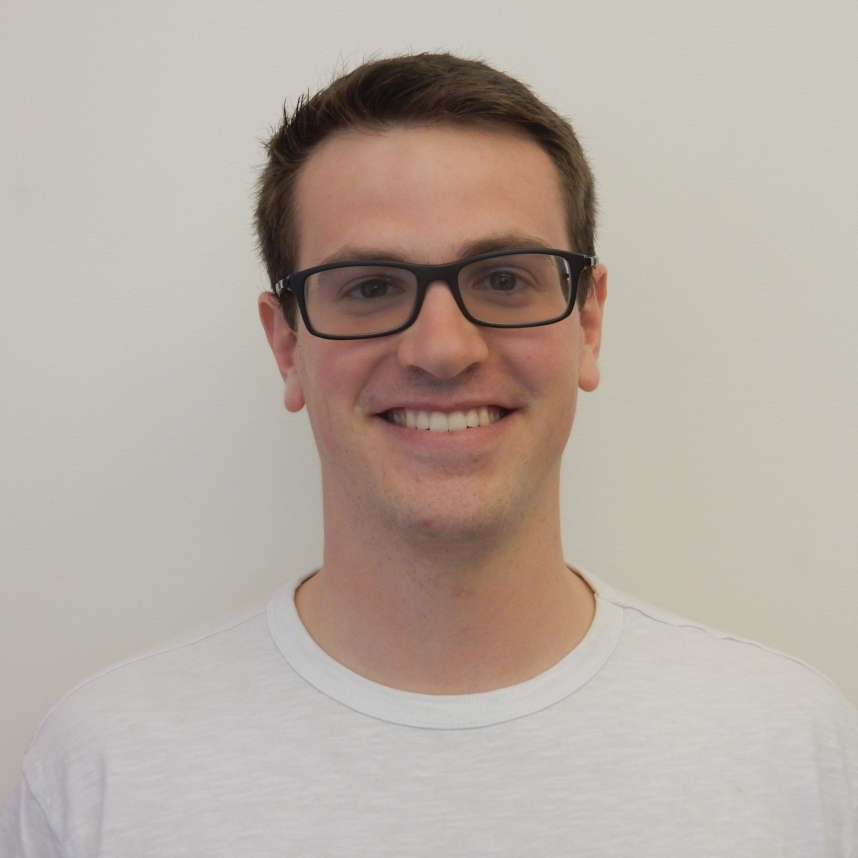
2:20 pm - Exocyclic Substituent Effect on Benzofulvene Conjugation
Connor Whyte, Senior Capstone Seminar
Benzofulvenes possess incredible versatility in their applications in the field of pharmaceuticals, and polymers especially. Examining the effect of exocyclic substituents on benzofulvenes, which are largely conjugated and planar molecules, gives some insight as to how other largely conjugated systems could be functionalized with different substituents. Analyzing the effects of how different R-substituents around the ring influence the conjugation was achieved by measuring the bond-length alternation and dihedral angle via X-ray crystallography as well as UV-Vis absorption. The steric effects of different substituents are of particular interest as they have the most viability to change the dihedral angle.
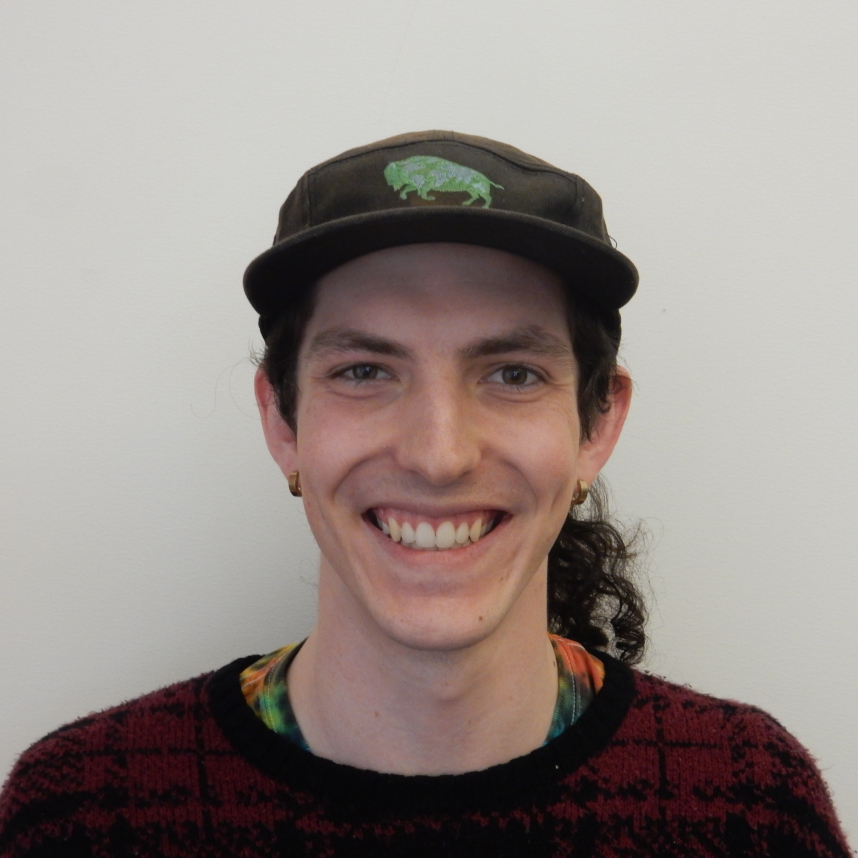
2:55-3:10 pm - Break
3:15 pm - Forthcoming
Zuleyka Lopez-Cruz, Senior Capstone Seminar

3:50 pm - Keynote Speaker (Morken Center for Learning and Technology 103)
Capstone Keynote: What Does Chemistry Have to do with Airplanes? From Carbon Fiber to Jet Fuel.
Jessica Boze, M.S., (PLU ’11), Boeing Research and Technology
As an engineer at Boeing Research & Technology, Jessica Boze does more than push buttons in a laboratory. She utilizes techniques across multiple platforms to generate, analyze and contextualize data that tells a story about materials. As someone who cares deeply about the environment she works to develop a suite of technologies which not only reduces Boeing’s environmental impact but also reduces manufacturing cost and flow time. Outside of the lab, you can find Jessica voraciously consuming a mix of self-development and fantasy books, traveling around the world, and learning how to play the ukulele.




Social Media